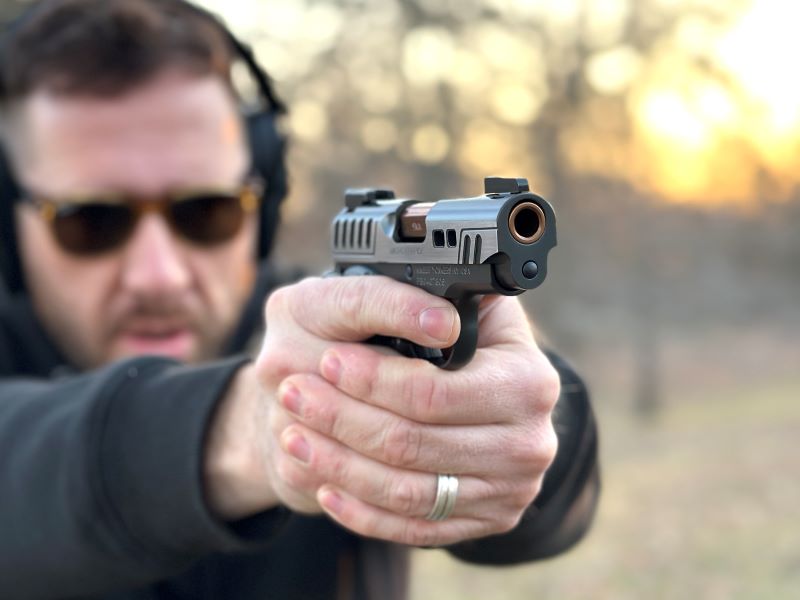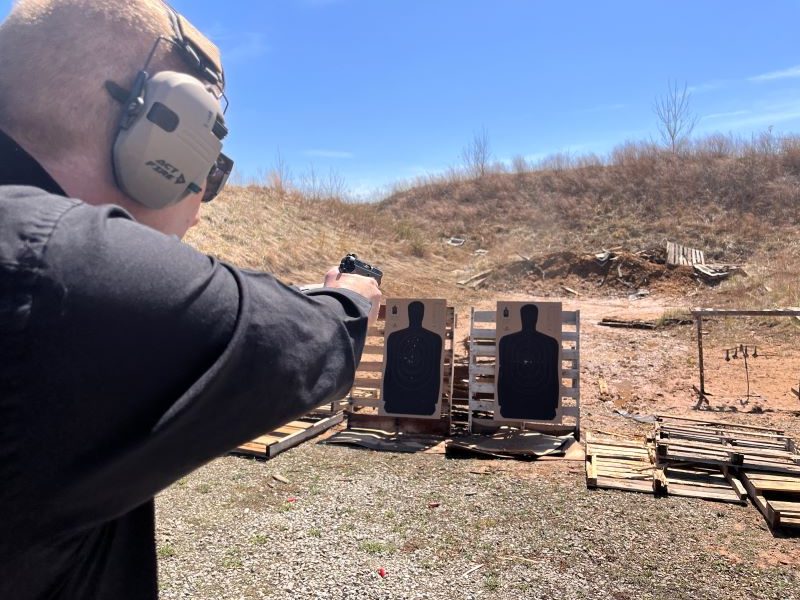If you own guns, you’re likely familiar with how they function and practice safe firearm handling skills. Hopefully. If you carry a gun for self-defense or have one at your house for home defense, training is an absolute must. Any type of range training is better than none, but I highly recommend participating in regular, application-specific training.

When you shoot at targets all day long, you’re bound to improve your accuracy and reloading skills as you become more familiar with your firearm. It lacks, however, some of the skills needed for self-defense. On the other hand, running qualification drills at longer distances isn’t realistic for most self-defense incidents either.
It’s common knowledge however that most shootings take place at less than seven yards, but recent events such as the Eli Dicken incident tell us that we should also train for longer distances. You need training for both long and short-distance applications, and it needs to be realistic.
Train With the Gun You Carry
It’s so easy to miss valuable training on the range without realizing it. One of the first things to remember is to train with the gun you carry. I’ll be the first to admit that I like shooting my full-size guns much more than my compact guns. I work in law enforcement and carry a full-size gun daily, so it makes sense to train with one, right? But guess what I carry when I’m off duty? A small compact gun that is easy more comfortable and easier to hide. It’s not as fun to shoot a small-framed gun, so it’s easy to overlook it on informal rainge days.

Do you keep an extra mag on you all the time? It’s a good idea to do so, but if you do not, then don’t train with one. Keep it as realistic as possible, using the same holster and number of rounds. The last thing you want is to train with something you wouldn’t normally have on you. When the unthinkable happens, your body will revert to your training because that’s all it knows.
Stop Dressing for the Range
I love range gear, tactical gear, and having fun while on the range. I have clothes just for the range, including boots, a hat, glasses, and even gloves. Training with any gear you can get ahold of is good and it improves your skill set. But there is a time and place for everything. Train with street clothes. You wouldn’t don your tactical gear and carry your Rambo Rifle to fend off an attacker at the mall with your family. Train like it. Your battle is usually safe at home and you will be limited to the handgun you are carrying. That’s it.

Your body needs to go through the movements of lifting your shirt or jacket out of the way and drawing your gun from a concealed carry holster. A smaller gun and limited ammo will feel different when you normally train with 30 rounds of ammo in your gun. I like wearing my range gear, and everyone should have some. Just don’t forget to train for a realistic scenario in your everyday life.
What type of shooting is best for CCW defense?
I always say, train for the unexpected. But you also want to train for the most likely threat. In the US, the most likely threat (according to FBI statistics) is less than seven yards with an average of three shots being fired. This means you need to practice shooting quickly at a close target and hitting center mass. This is different from bullseye shooting and you have little time to aim, evaluate, or fire.
When running a drill for CCW defense, try to use body-sized targets. B27 paper targets work great for these types of drills. Practice at ranges from 3-15 feet and shoot at the center of the target. It’s okay to get creative, just remember to follow safety rules on the range. One of my favorite ways to train for CCW is to have the person take a casual stand, hand them a cup with some water in it, and yell “gun.” The idea is to get the body used to dropping something in your hand, pull your clothing out of the way, and draw the gun to fire.

Summary
There are hundreds of drills available online if you don’t want to come up with your own drill. The important thing is to keep this part of the training realistic. Long-distance shooting is good and running mag change drills, advancement drills, and other scenarios are all fun. They are a great part of a training program, but they shouldn’t be the only way you train.
Carry your weapon and practice with the way you carry it. This could be with an ankle holster, purse, backpack, or some other type of concealed carry rig. Some people are even bringing back the fanny pack carry holsters (regrettably). It’s not as fun, but it’s important. You still want to combine CCW defense drills with other important ones. Mag changes, malfunction drills, long-distance shooting, speed drills, and others are all important. Just don’t get complacent and run the same drill every time you head to the range. Mix it up, have fun, and work hard.


